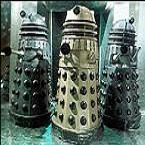Flashfyre
Posts: 330
Joined: 10/6/2000
From: Waynesboro, PA, USA
Status: offline

|
What you're seeing is the increased lethality of SMGs in close quarters. Since their range is significantly lower than that of long rifles, they aren't as effective beyond about 2 hexes. But inside that, and they can pump alot of lead into a small area, with the addd benefit of better target acquisition (shoot at 100yds vs 500yds and you'll agree). MGs, likewise, aren't as lethal at 1000yds+, but get in close, and more men go down per burst. Remember...the rifles are firing, at most, 10-12 shots apiece, one bullet at a time. And due to recoil, targetting suffers with each successive round. Then there is the time needed to change clips, and, in the case of most nations, they were using bolt-action rifles, not the semi-autos that the US used. More time to chamber rounds after each shot.
The SMG, on the other hand, is popping about 20-30 rounds in the same time, each shell closely following the previous one. Targetting is much better; the shooter doesnt have to bring the sights back onto the target after each shot. And as any combat soldier can tell you, more lead on target means more kills. Think of it this way: if you hit a man with one bullet, he may not go down for good. A graze, a hit to a nonvital area, even a shot to the limbs, none of these mean that a soldier is out of action for good. However...hit him with 3 or 4 bullets, in rapid succession, and he's probably gonna stay down for the count.
So, to wrap this up....I don't agree with the postion taken that SMGs shouldn't be as deadly, even if only one is available to the squad. They were, and are, deadly weapons at close range. This was one reason why Special Forces units (Rangers, Commandos, SpecOps, etc.) used them as primary weapons. They knew they were going to see the enemy up close, and wanted the firepower to put him down fast.
_____________________________
|
 Printable Version
Printable Version








 S... !!
S... !!

 . I'm really looking forward to the new OOBs.
------------------
Markku "Mac" Rontu
"Understanding is a three-edged sword,
your side, their side and the truth."
- Sheridan in B5
. I'm really looking forward to the new OOBs.
------------------
Markku "Mac" Rontu
"Understanding is a three-edged sword,
your side, their side and the truth."
- Sheridan in B5


 New Messages
New Messages No New Messages
No New Messages Hot Topic w/ New Messages
Hot Topic w/ New Messages Hot Topic w/o New Messages
Hot Topic w/o New Messages Locked w/ New Messages
Locked w/ New Messages Locked w/o New Messages
Locked w/o New Messages Post New Thread
Post New Thread